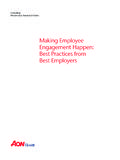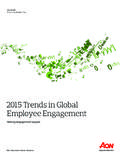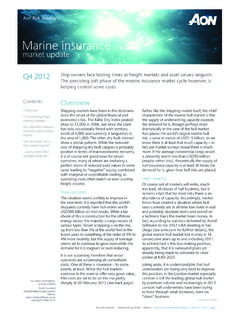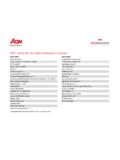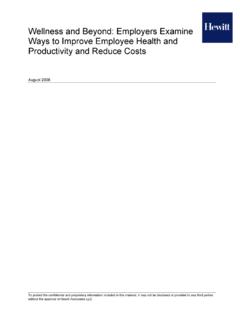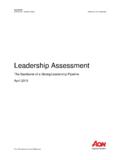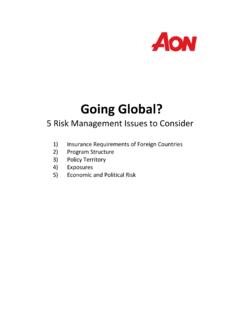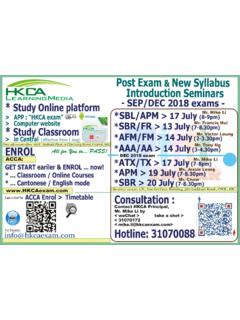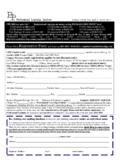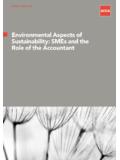Transcription of A Guide for Non-governmental Organisations 2011
1 Aon Risk Solutions Global Risk Consulting Enterprise Risk governance and Management governance of Project Risk A Guide for Non-governmental Organisations 2011. governance of Project Risk A Guide for NGOs Purpose of the Handbook The NGO sector is board and NGOs come in various shapes and sizes statutory bodies, charities, advisory committees, to name a few. The target segment of this handbook is the Non-governmental , not-for-profit Organisations which provide certain public services ( healthcare, education, social welfare, art and culture). They typically have an arms-length relationship with the government through subvention. They will have a business-like governance and organisation structure to manage an operating budget, run certain day-to-day operations and provide certain services to the public. Some even have annual business plans. Charitable Organisations and social service providers will fall into our scope, so will be statutory Organisations undertaking major projects.
2 This handbook is designed for directors and senior management of NGO boards who are required to make decisions on new projects and to perform an oversight role on on-going projects. This practical handbook aims to: Provide templates and checklists for directors to implement Project governance and Risk Management;. Provide an easy-to-understand Guide for directors to follow in order to perform their stewardship and monitoring role throughout the project life cycle; and Help directors detect problems in projects at early stages. Who would benefit from this Handbook? Members of the Project governance / Steering Committee who are tasked with ensuring projects are delivered with the required values;. Project Sponsors / Funding Providers whereby the project governance structure can provide them with greater assurance that the sponsored projects can deliver the intended benefits;. The Board of the NGO who can make use of the guidelines to set up a proper project governance system for the organisation in undertaking projects.
3 Senior executives of the NGO who make use of the guidelines to help align projects and operations at the same time;. Project Managers who require a project governance structure to perform their project management responsibilities; and Programme / service managers of the NGO who will turn completed projects into programme /. service offerings. Aon Risk Solutions | Global Risk Consulting | Enterprise Risk governance and Management 1. Acknowledgment The research team would like to express our gratitude to the directors and senior executives of NGOs whom we have interviewed and who have provided valuable comments to us. We also like to thank colleagues of Aon Hong Kong Limited who volunteered to support this project by conducting interviews and contributing to the drafting of the handbook. Special thanks to Hong Kong Council of Social Service, our partner in this project, who has provided valuable support throughout the project.
4 Disclaimer The governance of Project Risk A Guide to Non-governmental Organisations (2011) and all its contents are meant only as a reference for issues related to project governance and for no other purpose. It does not provide legal opinions, nor does it contain or purport to contain any specific legal, accounting, tax, insurance, risk related or other advice on the topics covered. All best practices, templates, specimens, sample clauses, agreements and other documents are provided strictly for reference and information purposes only, and do not constitute legal, accounting, tax, risk related or other advice on the matters covered therein. The best practices, templates, specimens, sample clauses, agreements and other documents are provided as is' without warranty of any kind, expressed or implied, including but not limited to fitness for a particular purpose. This document is distributed for internal use to those who registered with us or the Hong Kong Council of Social Service.
5 Aon and its affiliates cannot however accept any responsibility for any loss of whatsoever kind including loss of revenue, anticipated savings or profits, loss of goodwill or for any indirect or consequential loss whatsoever to any person using the documents, or acting or refraining from action as a result of the material in this publication. It is further understood that recipients of this handbook will obtain their own legal and other relevant professional advice, in accordance with their specific interests, needs, and circumstances. All rights reserved. All intellectual property rights including copyright are owned by Aon and other parties who have licensed to those copyrights. Aon Enterprise Risk governance and Management Practice Aon may be the only independent consulting practice in Asia that provides a comprehensive range of proactive risk management advisory services for Boards of Directors as they move from one stage of maturity to the next.
6 The Enterprise Risk governance and Management Practice is led by Dr. Gregg Li and supported by colleagues throughout the world, including some of the leading lights in this area such as our emeritus consultants and professors Robert Tricker in the UK, Gordon Redding in France, and Mike Hough in Australia. The Practice offers a range of specialties -- including Enterprise Risk Management, Institutional governance , Family Business governance , and Enterprise governance for Private Equities. The Practice aims to help Directors enhance their impact and relevance, design and implement effective corporate governance practices, create and monitor sustainable value for their Organisations , and manage key risks. For more information, please visit us at Aon Risk Solutions | Global Risk Consulting | Enterprise Risk governance and Management 2. Table of Contents Executive Summary 5. 1 Introduction 10. Project Failure 10. Causes of Project Failure 11.
7 Definitions 13. 2. The Project governance Framework 16. Define Corporate and Project governance 16. Corporate governance 17. What is Good Project governance ? 18. Project governance Framework 20. The Roadmap 22. 3. Setting up the Project governance Framework 24. How Good is Your Organisation in Project governance Practices? A Scan 24. Setting Up Project governance Organisation 25. Setting Up Policies for governance of Projects 29. Setting Up Project Risk Management Process 34. 4 Operationalise Project governance 42. Govern a Project Through its Life Cycle 42. Strategic Review at Organisation or Programme Level 43. Project Initiation 44. Project Planning 47. Project Execution 51. Project Closure 54. Summary of the Project Delivery Framework 57. Project Control by International NGOs 59. IT Project governance 60. Aon Risk Solutions | Global Risk Consulting | Enterprise Risk governance and Management 3. 5 Critical Success Factors for governance of Project Risk 64.
8 Contact Information 66. About Aon 67. Appendices Aon Risk Solutions | Global Risk Consulting | Enterprise Risk governance and Management 4. Executive Summary Project Failure Non-governmental Organisations (NGOs) often embark on new projects to advance their organisation objectives. These projects range from launching a social enterprise, developing a new service, automating certain processes, to building a new service centre. A project is considered failed if it cannot meet the set objectives. Increasingly a project failure implies a failure of governance . If any of the following incidents occurred in your organisation, you should read on: Under-bidding of government contracts on running a subvented service;. Cost overrun on new building / centre development and the only way to secure additional funding is through fund raising;. Financial non-viability of self-financing projects / social enterprises; and Completed projects short of end users' expectations.
9 Many reasons attribute to project failure. The Office of Government Commerce of the UK Government together with the National Audit Office lists out eight common causes of project failures. All but items 4 and 5 are related to governance of projects: 1. Lack of clear link between the project and the organisation's key strategic priorities, including agreed measures of success. 2. Lack of clear ownership and leadership for the project from the organisation's governing body. 3. Lack of effective engagement with stakeholders. 4. Lack of skills and proven approach to project management and risk management. 5. Too little attention to breaking development and implementation into manageable steps. 6. Evaluation of proposals driven by initial price rather than long-term value for money (especially securing delivery of business benefits). 7. Lack of understanding of and contact with the project contractors / service vendors at senior levels in the organisation.
10 8. Lack of effective project team integration between clients, the supplier team and the supply chain. A narrow definition of project success is when all required deliverables (be it a building, a system, or a service) are made within budget and on time. When a project is complete and handed over to user departments, benefits of the project are often not fully realised until they are used and assimilated into the day-to-day operations. Where the project ends and where the benefits are fully realised is a Gap which is often overlooked. Many project sponsors would sign off the project at completion without further input to ensure that the final benefits are realised. Aon Risk Solutions | Global Risk Consulting | Enterprise Risk governance and Management 5. Project governance Framework The Foundation Project governance describes the processes that need to exist for a successful project. Project governance provides the framework to ensure proper evaluation, planning and execution of the project; defines the decision making flow and authority; ensures appropriate review of issues and management of risks throughout the project life cycle; and ensure proper flow of information to report progress and address issues.
